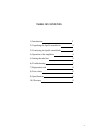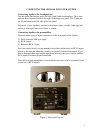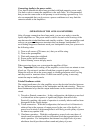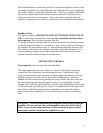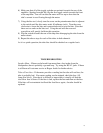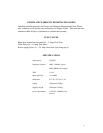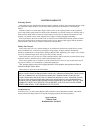8
6) Make sure that all of the toggle switches are pointed towards the rear of the
amplifier. Starting from the left, flip the first toggle switch towards the front
of the amplifier. You will see that the meter will rise up to show that the
tube’s current is now flowing through the meter.
7) Using the bias tool, slowly turn the screw on the potentiometer that is adjacent
to the switch until the bias meter reads 40 miliamps (mA). Turn the screw
clockwise to lower the bias and counterclockwise to raise the bias. Note that
there are two ends on the bias tool. Using the end with the recessed
screwdriver will greatly facilitate this operation.
8) Flip the switch towards the rear of the amp thus disengaging the tube from the
meter circuit.
9) Repeat the above steps for each of the tubes in both channels.
As it is a quick operation, the tube bias should be checked on a regular basis.
TROUBLESHOOTING
Speaker Hum – If hum can be heard from more than a few inches from the
loudspeaker, there is probably a ground loop. Try using the RCA 2 jacks. If there
is still hum call customer service at Rogue Audio for further advice.
Tube will not bias – If the meter provides a reading but the tube will not bias, the
tube is probably bad. If no meter reading can be attained, check the fuse (1/4
Amp slow blow). Note that it is difficult or impossible to visually tell that the
slow blow fuse is blown. If the fuse is bad, replace the fuse and then set the bias.
If the bias will not maintain itself and the fuse blows again, the tube should be
replaced.




